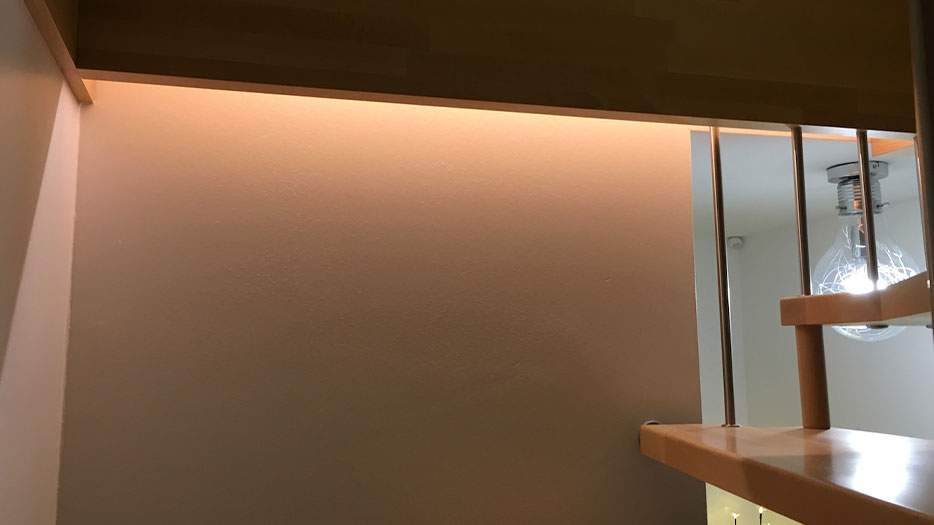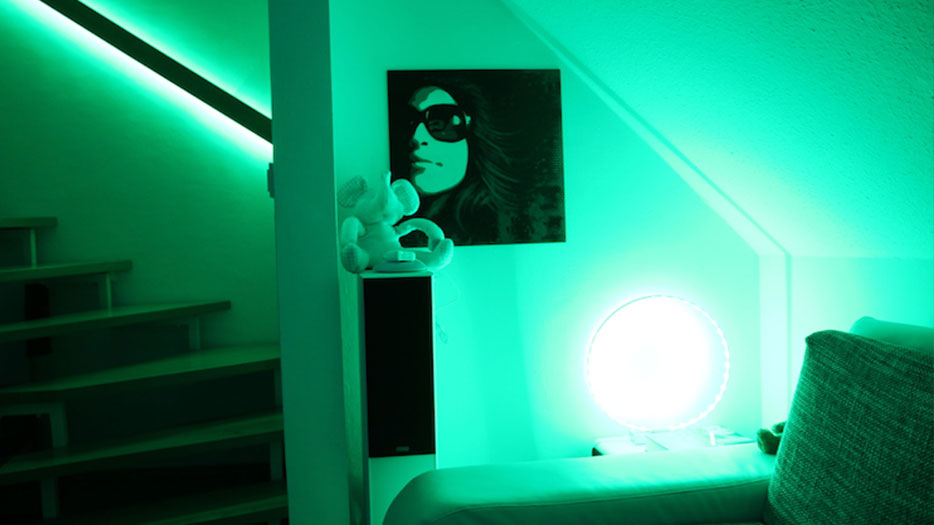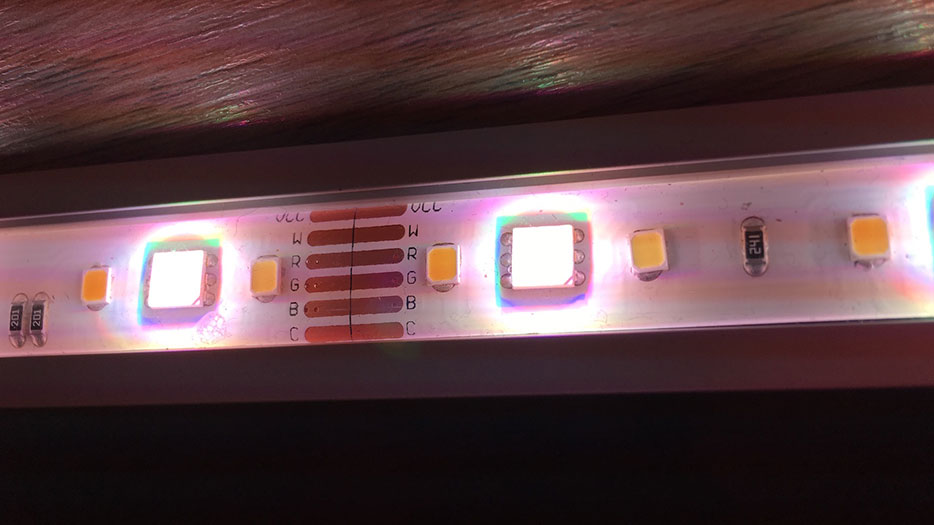Smart lights at a smart office
Who hasn’t experienced this? You are sitting in your home office in the afternoon and you’d really like to finish that one important task. But instead, you stare at the screen surrounded by artificial, flickering light and you feel no motivation. After such an office day, you can feel tired and drained. Actually, you could be much further with your tasks and projects if there wouldn’t be a tiredness. But how can you manage to feel as fit and vital as if you just came back from holidays?
Smart lights could be the answer to this question, because light has far-reaching consequences for humans. Why? We explain it in this blog article.
Artificial light makes you sick and tired
It makes a big difference if you work in daylight or if a (poor) desk lamp illuminates your workplace. There are studies that prove this fact. One group worked at daylight conditions and another at artificial light. The result: at the end of the day, the daylight group was much more awake than those who only worked at artificial light. The participants, working at artificial light, were tired and less productive.
Besides these negative effects, artificial light also enhances the distribution of cortisol – a stress hormone. This is a pretty good substance when you’re on the run, for example, because cortisol makes you run faster, improves breathing and restricts digestion. Unfortunately, these are no advantages for a day in the office. In fact: with a permanently increased distribution of this stress hormone, the immune system suffers. So the next cold is certain.
But how can it be that the lighting has such a big influence on the performance?

Light controls our biorhythm
The biorhythm controls our sleep, our activity, our tiredness and significantly influences our whole body. And this cycle is controlled by the sun or by daylight. Therefore you should make sure that your desk is near a window so that you get enough daylight. Unfortunately, this is not always possible and this is exactly where the home office should become smart. Many smart lamps can not only be switched conveniently via an app, but the light colour can also be adjust.
Light colour is also named as colour temperature and is indicated in Kelvin. The rule is, the higher the light colour, the more active is the biological rhythm.
While we prefer a warm white light below 3,300 Kelvin for a cosy and comfortable mood in the evening hours, a neutral white light (above 3,300 Kelvin) gets us going. For workstations, a colour temperature of 4,000 Kelvin and above is suitable. Daylight itself has a colour temperature of 6,000 Kelvin – but is perceived by some as too bright and thus “too stressful”.
Smart office lighting control
The easiest way to keep the biorythm going on in your home office is to change the light source. We recommend the high-quality LED strips from LED Trading.
In addition to varying the colour temperature, the LED strips can also be dimmed via controller. Dimmability is particularly for different activities. For example, reading, writing, typing, concentrated work on the PC, etc.
Light therapy
To recognise how lighting at the workplace influences the biorhythm, we would like to make a short excursion in medical science. In medical science, psychological problems, depression or even patients with disturbed sleep cycles are treated with light therapy. These patients receive regular irradiation with a daylight lamp and thus find a healthy rhythm again.

But daylight can not onlay have a useful effect in medical science. Especially in the dark seasons, simulated daylight can increase concentration and reduce tiredness during the day, thus it is treating daytime jetlag.
Filtering blue light to reduce difficulty falling asleep
If light can help as a therapy for disturbed sleep cycles, could light perhaps also be the cause of difficulty falling asleep? The answer: Yes, definitely!
Who hasn’t experienced this? You are in the bed in the evening, and you have to quickly check something on your mobile phone, your e-mails or quickly go through the presentation for the next day on your notebook. And afterwards you toss and turn in bed, because the tiredness is faded away. The blue light emitted by devices such as notebooks, tablets, smartphones or e-readers is to blame for it. It has a similar effect to our biorhythm as a daylight lamp. Just as “no daylight during the day” upsets our biorhythm, our body also suffers when we expose it to similar daylight in the evening.
A study by the University of Texas with 1,500 test persons proved that the use of such electronic devices before going to bed reduces the average duration and quality of sleep, which ultimately also affected the health of the test persons.
This danger can be counteracted thanks to software. Some manufacturers offer it as an onboard tool. At Apple (TM), this function is called “Nightshift” and has the effect that the problematic blue component in the light is filtered out after a certain time. Then the colours of the display appear much warmer. For Android smartphones, there are various apps for this function, such as the app “Twilight”.
If you want to use your PC or notebook again in the evening, you should install the free software F.lux. This programme runs completely unnoticed in the background and makes all the settings automatically so that the display looks completely normal during the day and appears much warmer in the evening due to the filtered blue component.

Conclusion for smart light in your office
The best light at the workplace is direct daylight. If this possibility is not always available, a light should illuminate the desk with a daylight white colour. In addition – especially in the darker seasons – a daylight lamp can combat the jet lag. And if you must work in the evening on your PC, you should use software for the blue content of your display!

